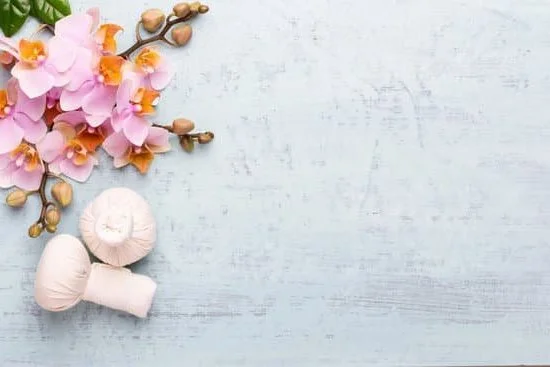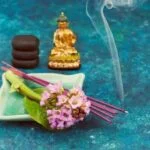Essential oils have been used for centuries for their therapeutic and aromatic properties. In this article, we will explore how to use essential oils aromatherapy to improve your overall well-being and health. From choosing the right essential oils to incorporating them into your daily routine, we’ll cover everything you need to know about harnessing the power of essential oils for aromatherapy.
First, we’ll delve into the basics of essential oils aromatherapy, explaining what it is and its numerous benefits. Whether you’re looking to alleviate stress, improve sleep quality, or simply uplift your mood, essential oils can be a natural and effective solution. We’ll discuss the science behind aromatherapy and how it can positively impact both your physical and mental health.
Once you’ve gained an understanding of the fundamentals, we’ll guide you through choosing the right essential oils for different purposes. With a detailed overview of various types of essential oils and their unique properties, you’ll be equipped to make informed decisions when building your aromatherapy collection. Additionally, we’ll provide tips on how to create custom blends tailored to address specific needs and preferences.
Choosing the Right Essential Oils
When it comes to selecting essential oils for aromatherapy, it’s essential to choose the right ones based on your specific needs and desired outcomes. With a wide variety of essential oils available, each with its own unique properties and benefits, it can be overwhelming to decide which ones to use. Below is a detailed guide on how to choose the best essential oils for different purposes.
One of the most important factors to consider when choosing essential oils is their therapeutic properties. For example, lavender oil is well-known for its calming and relaxing effects, making it a great choice for stress relief and improving sleep quality. On the other hand, peppermint oil is invigorating and can help with mental alertness and concentration. Researching the therapeutic properties of different essential oils will help you make informed decisions when selecting them for aromatherapy.
Another crucial aspect to consider is personal preference. Since aromatherapy is deeply connected to our sense of smell, it’s important to choose essential oils that you enjoy. Pleasant aromas can enhance the overall experience of aromatherapy and make it more effective in achieving your desired outcomes. Experimenting with different scents and observing how they make you feel can help you identify which essential oils resonate with you the most.
It’s also worth noting that some essential oils may have contraindications or interactions with certain medical conditions or medications. Therefore, if you have any underlying health concerns, it’s advisable to consult with a healthcare professional before using essential oils for aromatherapy. Additionally, if you’re new to using essential oils, starting with popular and versatile options such as lavender, lemon, or tea tree oil can be a good way to ease into incorporating them into your daily routine.
| Essential Oil | Therapeutic Properties |
|---|---|
| Lavender Oil | Calming and Relaxing – Stress Relief, Sleep Improvement |
| Peppermint Oil | Invigorating – Mental Alertness, Concentration |
| Lemon Oil | Uplifting – Mood Enhancement, Immune Support |
Methods of Application
When it comes to using essential oils for aromatherapy, there are several methods of application to consider. Each method offers its own unique benefits and can be tailored to fit individual preferences and needs. Below are some popular ways to use essential oils for aromatherapy:
- Diffusing: Using an essential oil diffuser is a common and effective way to enjoy the aromatic benefits of essential oils. The diffuser disperses the oil particles into the air, allowing you to breathe in the scent and experience its therapeutic effects.
- Inhalation: Direct inhalation involves placing a few drops of essential oil onto a tissue or cloth and then inhaling the scent. This method is quick and convenient, making it ideal for on-the-go use.
- Topical Application: Applying diluted essential oils directly to the skin is another popular method of aromatherapy. This can be done through massage, compresses, or adding them to skincare products.
These methods of application allow you to experience the benefits of essential oils aromatherapy in different ways, whether you prefer a subtle and continuous diffusion throughout your living space or targeted topical application for specific concerns.
It’s important to note that when using essential oils for aromatherapy, safety precautions should always be considered. Proper dilution ratios and potential allergens should be taken into account before applying any essential oil topically or using it in a diffuser or inhaler.
By following these guidelines, you can enjoy the therapeutic benefits of essential oils without risking any adverse reactions. Learning how to use essential oils aromatherapy safely will ensure that you can fully enjoy their benefits while minimizing any potential risks.
Safety Precautions
Essential oils can be incredibly beneficial for aromatherapy, but it is important to use them safely and responsibly. Before delving into the details of how to use essential oils for aromatherapy, it is crucial to understand the potential risks associated with their use. When used incorrectly, essential oils can cause skin irritation, allergic reactions, or even more severe side effects. It is important to follow safety precautions to minimize these risks and ensure a positive experience with essential oils aromatherapy.
Dilution ratios are a critical aspect of using essential oils safely. Most pure essential oils are highly concentrated and should never be applied directly to the skin without being diluted with a carrier oil. A typical dilution ratio is 2-3 drops of essential oil per teaspoon of carrier oil for topical use. This not only helps prevent skin irritation but also ensures that the essential oils are spread over a larger area for optimal absorption.
In addition to dilution ratios, it is important to be aware of potential allergens when using essential oils for aromatherapy. Some people may have sensitivities or allergies to certain essential oils, so it is recommended to perform a patch test before using any new oil topically.
This involves applying a small amount of diluted oil to the skin and monitoring for any adverse reactions over 24 hours. By taking these safety precautions, individuals can enjoy the benefits of essential oils aromatherapy while minimizing the potential risks.
| Aspect | Recommendation |
|---|---|
| Dilution ratios | 2-3 drops of essential oil per teaspoon of carrier oil |
| Potential allergens | Perform patch test before using new oil topically |
Creating Blends
Creating custom essential oil blends is a wonderful way to optimize the benefits of aromatherapy for specific needs. By combining different essential oils, you can create unique scents and therapeutic effects tailored to your desired outcome. Here are some tips on how to mix and match different essential oils to create customized blends for specific needs.
Understanding Essential Oil Profiles
Before creating your own blend, it’s important to understand the individual profiles of each essential oil. Some may have calming properties, while others may be invigorating or uplifting. By familiarizing yourself with the characteristics of each oil, you can better determine which ones would complement each other in a blend.
Consider the Desired Effect
When creating a custom blend, consider the specific effect you want to achieve. If you’re looking for relaxation, you may want to include lavender or chamomile in your blend. For an energy boost, citrus oils like lemon or orange can be great choices. By identifying the desired outcome, you can select oils that will work together synergistically.
Experimenting With Ratios
Once you have selected the essential oils for your custom blend, it’s time to experiment with ratios. Start with a small amount of each oil and gradually adjust the proportions until you achieve the desired scent and effect. Keep track of the ratios that work well for you so that you can replicate them in the future.
By following these tips, you can create personalized essential oil blends that cater to your specific needs and preferences. Whether it’s for relaxation, energy, or other therapeutic purposes, experimenting with different combinations of essential oils can result in delightful and effective aromatherapy experiences.
With these practical tips on how to use essential oils aromatherapy through blending, individuals can personalize their aromatic experience based on their needs with confidence and creativity.
Aromatherapy Techniques
Aromatherapy is the use of essential oils to promote physical and psychological well-being. There are various techniques for using essential oils in aromatherapy, and each offers unique benefits. Here are some popular aromatherapy techniques:
- Massage: Incorporating essential oils into massage therapy not only enhances the therapeutic effects of the massage but also allows for absorption of the oils through the skin. By diluting essential oils with a carrier oil, such as coconut or almond oil, and applying them topically during a massage, you can experience both physical and emotional benefits.
- Baths: Adding a few drops of essential oils to a warm bath can create a luxurious and relaxing experience. When mixed with bath salts or a dispersant, such as liquid soap or milk, the essential oils can disperse evenly in the water, allowing you to inhale their aroma while also absorbing them through your skin.
- Steam Inhalation: This technique involves adding a few drops of essential oil to a bowl of hot water, then covering your head with a towel and inhaling the steam. This method is particularly effective for respiratory issues and can help alleviate congestion and clear sinuses.
These techniques are just a few examples of how to use essential oils aromatherapy. Each method offers its own unique benefits and serves different purposes in promoting overall wellness.
It’s important to note that when using essential oils for any of these techniques, it’s crucial to select high-quality oils from reputable sources and ensure proper dilution to avoid adverse reactions. Additionally, always be mindful of any potential allergens or sensitivity to specific oils when using them in aromatherapy techniques. By following safety precautions and experimenting with different methods, you can discover which aromatherapy techniques work best for your individual needs and preferences.
Incorporating Essential Oils Into Your Daily Routine
Skincare
One of the most popular ways to incorporate essential oils into your daily routine is through skincare. Essential oils have numerous benefits for the skin, including moisturizing, reducing inflammation, and fighting acne.
When using essential oils in skincare, it’s important to dilute them with a carrier oil to avoid any adverse reactions. For example, adding a few drops of lavender or tea tree oil to a carrier oil like jojoba or coconut oil can create a soothing and effective face serum.
Cleaning
Another practical way to utilize essential oils in your daily routine is for cleaning purposes. Many essential oils have antibacterial and antiviral properties, making them excellent natural alternatives for cleaning solutions. For example, mixing lemon or eucalyptus essential oil with water and vinegar creates a powerful all-purpose cleaner that not only cleans surfaces but also leaves behind a fresh and invigorating scent.
Relaxation
Incorporating essential oils for relaxation is another great way to add aromatherapy into your daily life. Diffusing calming essential oils such as chamomile, bergamot, or ylang-ylang in the evenings can help promote relaxation and improve sleep quality. You can also add a few drops of these relaxing essential oils to a warm bath for an indulgent and soothing experience at the end of a long day.
By integrating essential oils into your skincare routine, cleaning regimen, and relaxation practices, you can experience the many benefits of aromatherapy throughout your daily life. Whether you are seeking to uplift your mood during cleaning chores or wind down after a stressful day with aromatic baths, essential oils offer versatile solutions for incorporating aromatherapy into your everyday activities.
Aromatherapy for Specific Purposes
In conclusion, essential oils aromatherapy offers a wide range of benefits and uses for improving overall well-being. By incorporating the use of essential oils into your daily routine, whether it’s in skincare, cleaning, or relaxation, you can experience the therapeutic effects they have to offer. From stress relief to sleep improvement, and mood enhancement, essential oils can be utilized for specific purposes to address various physical and emotional needs.
When choosing the right essential oils for specific purposes, it’s important to consider their individual properties and benefits. Whether it’s calming lavender for stress relief, uplifting citrus oils for mood enhancement, or soothing chamomile for sleep improvement, there are countless options available. By understanding the methods of application and safety precautions when using essential oils aromatherapy, you can ensure a positive and effective experience.
Experimenting with creating custom blends allows you to tailor the use of essential oils to your specific needs. Whether through massage techniques or steam inhalation, incorporating these blends into different aromatherapy techniques can further enhance their effectiveness. Overall, by learning how to use essential oils aromatherapy in a safe and efficient manner, you can unlock their full potential in promoting holistic wellness.
Frequently Asked Questions
How Do You Use Essential Aromatherapy Oils?
Essential aromatherapy oils can be used in a variety of ways. Some common methods include diffusing them, adding a few drops to a warm bath, mixing them with a carrier oil for massage, or applying them to pulse points for inhalation.
How Do You Use Essential Oils in a Diffuser?
Using essential oils in a diffuser is a popular way to enjoy their aromatherapy benefits. Simply add water and a few drops of your chosen oil to the diffuser, turn it on, and let the mist carry the fragrance and therapeutic properties throughout the room.
How Do You Use Essential Oils for Beginners?
For beginners, it’s best to start by researching different essential oils and their potential benefits. Then, choose one or two oils to begin with and experiment with different application methods such as diluting them in a carrier oil for topical use or diffusing them for aromatic benefits.
Gradually expand your collection and knowledge as you become more comfortable with essential oils.

Are you looking for a natural way to improve your health and wellbeing?
If so, aromatherapy may be the answer for you.





